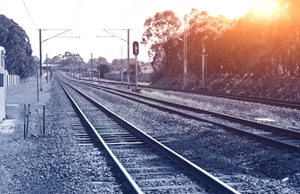Australia’s rail network is one of the most important aspects of the country’s transport infrastructure. However, when it comes to moving goods out of Brisbane, there is only one line running south to Sydney.
Not only does this represent a risk in the event of a natural disaster, but it also means that goods sent further south are forced to navigate Sydney’s rail network, which can often lead to delays and congestion.
Because of these issues, many goods are currently sent south from Brisbane by road rather than rail in order to avoid higher costs.
However, this is set to change in the next few years, with a new rail link planned to connect Brisbane with Melbourne.
The Inland Rail project will connect Brisbane with towns like Toowomba, Oakey and Millmerran, before crossing New South Wales and connecting with the main line heading south to Melbourne from Sydney.
During the construction of this rail line, these towns will likely see greater demand for civil construction skills developed through apprenticeships in the short term, while in the long term this project will unlock greater connections for the area’s mining and agricultural industries.
By building this connection, rail transport will be cut by seven hours between the two cities. The improvement in network efficiency will also allow rail transport between Queensland and the south to reach a comparable cost to that of freight.
The federal government has set aside $300 million to undertake the preconstruction works, with total construction expected to be completed in ten years.
Deputy Prime Minister Warren Truss pointed to the advantages that this project would bring to Australia’s rural communities, who are expected to benefit from greater connectivity.
“Every study conducted on the Inland Railway recognises it is a must for unlocking economic productivity, but the experts also agree that to capitalise on its potential careful and strategic planning is essential. It will also need to be a responsible investment, balancing cost against the benefits for rail freight,” said Mr Truss.
“It will be a game changer for how we move freight through New South Wales, Victoria and Southern Queensland, while linking to the existing national network to move freight around the nation.”
While the project’s main focus will be on reducing the cost of freight between Brisbane and Melbourne, there will be a number of other benefits from this work. One will be a 24/7 rail connection between Brisbane city and the port. With Brisbane port recently approved for greater expansion in the future, this connection will be valuable for realising the state’s export potential.
